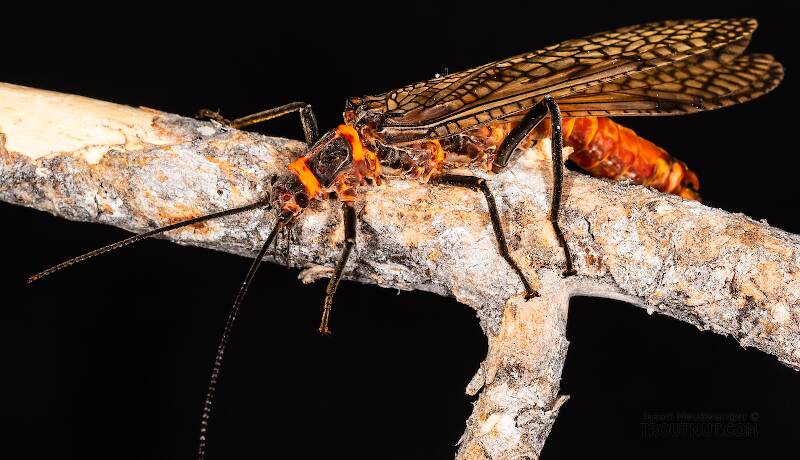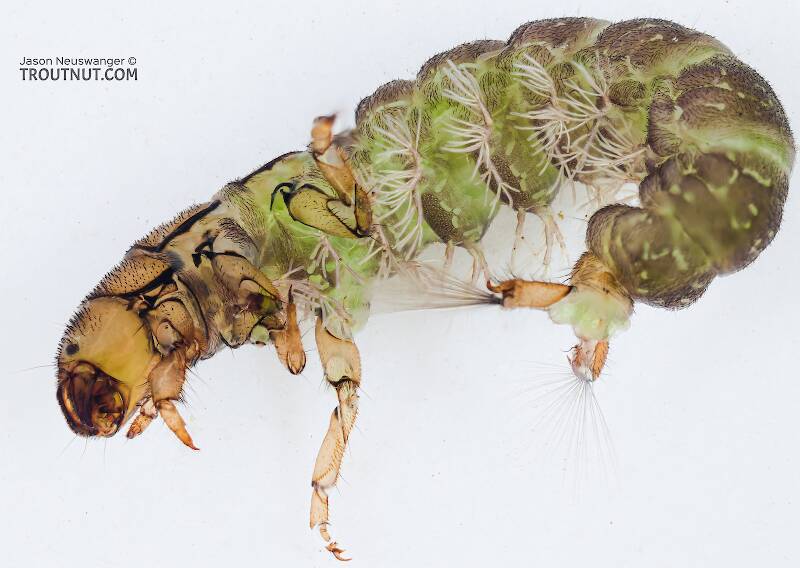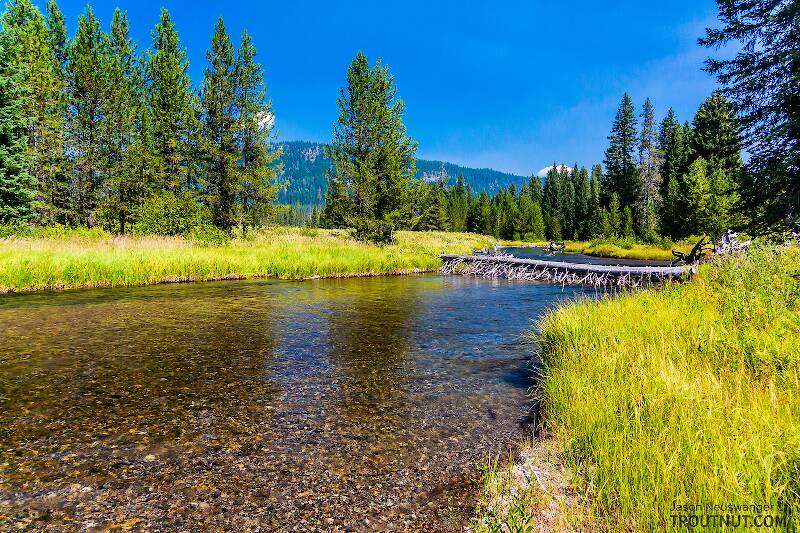
Salmonflies
Pteronarcys californica
The giant Salmonflies of the Western mountains are legendary for their proclivity to elicit consistent dry-fly action and ferocious strikes.
Featured on the forum

With a bit of help from the microscope, this specimen keys clearly and unsurprisingly to Hydropsyche.

Troutnut is a project started in 2003 by salmonid ecologist Jason "Troutnut" Neuswanger to help anglers and
fly tyers unabashedly embrace the entomological side of the sport. Learn more about Troutnut or
support the project for an enhanced experience here.
Kroil on Feb 29, 2008February 29th, 2008, 11:05 am EST
There once was angler named Dave,
Who kept a dead whore in a cave,
He would say with a grin,
As he wiped off his chin,
"Just think of the money I'll save."
Who kept a dead whore in a cave,
He would say with a grin,
As he wiped off his chin,
"Just think of the money I'll save."
When I found the skull in the woods, the first thing I did was call the police. But then I got curious about it. I picked it up, and started wondering who this person was, and why he had deer horns. - Jack Handey

